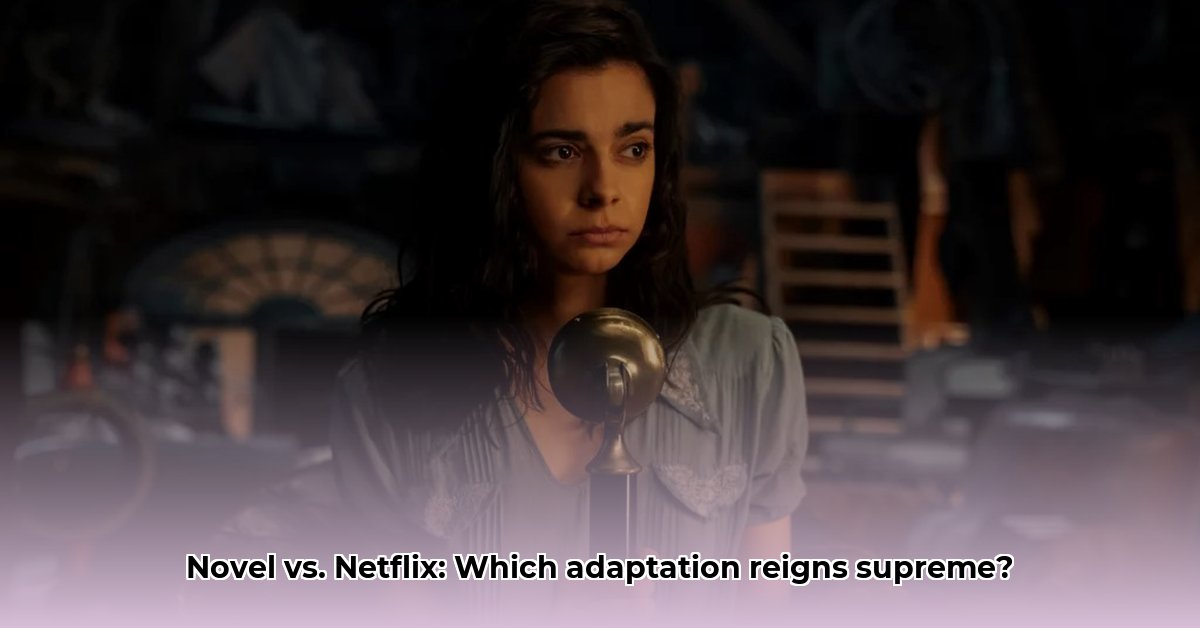Book vs. Screen: Illuminating the Differences
Anthony Doerr’s Pulitzer Prize-winning novel, All the Light We Cannot See, captivated readers with its lyrical prose and poignant story of two young lives intertwined during World War II. Netflix’s recent miniseries adaptation has sparked considerable discussion, with critics and audiences seemingly divided on its merits. This review delves into a comparative analysis of both versions, exploring their respective strengths and weaknesses, and ultimately addressing the question: does the adaptation capture the incandescent magic of the original?
Narrative and Structure: A Tale of Two Mediums
One of the most significant differences lies in the narrative structure. Doerr’s novel employs a non-linear timeline, artfully weaving together Marie-Laure and Werner’s separate journeys. This fragmented approach, while praised by critics for its complexity, may have contributed to some readers finding the pacing uneven. The miniseries opts for a more linear structure, likely to enhance clarity for viewers. However, some argue this simplification sacrifices the novel’s nuanced exploration of time and memory. This structural shift exemplifies the inherent challenges of adaptation: balancing fidelity to the source material with the demands of a different medium.
Doerr’s novel also distinguishes itself through its rich, evocative language. The prose creates a visceral experience, immersing the reader in Marie-Laure’s sensory world and the brutal realities of war. The miniseries, while visually stunning, arguably struggles to replicate this lyrical depth. Visual storytelling, by its nature, prioritizes showing over telling. This makes it more challenging to convey the internal landscapes of the characters, a key strength of the novel.
| Feature | Novel | Miniseries |
|---|---|---|
| Narrative Structure | Non-linear, fragmented | Linear, streamlined |
| Prose/Visuals | Lyrical, evocative imagery | Cinematic, visual storytelling |
| Pacing | Deliberate, introspective | Faster-paced, action-oriented |
Character Portrayals: Capturing Inner Light?
The adaptation’s portrayal of the central characters has drawn considerable scrutiny. Critics suggest the miniseries simplifies the rich inner lives that Doerr so meticulously crafted. Marie-Laure, whose blindness heightens her other senses, loses some of her interiority in the transition to screen. While the actress delivers a commendable performance, the script arguably fails to fully capture the vibrant world she creates within her mind. Some argue the emphasis on visuals, ironically, diminishes the impact of her blindness by prioritizing external representation over internal experience.
Werner, too, undergoes a transformation in the adaptation. His moral struggles, so central to the novel, feel less pronounced in the miniseries. He appears more reactive than proactive, a victim of circumstance rather than an individual grappling with difficult choices. This arguably lessens the complexity of his character arc, potentially impacting the narrative’s exploration of moral ambiguity.
The supporting cast faces similar challenges. Reinhold von Rumpel, a chillingly complex antagonist in the novel, becomes a more conventional villain in the miniseries. While this might make him more readily understood by a wider audience, it arguably sacrifices the nuance of his character. This streamlining effect extends to other supporting characters as well.
| Feature | Novel | Miniseries |
|---|---|---|
| Character Depth | Nuanced, complex inner lives | Simplified, externally focused |
| Marie-Laure | Rich inner world, heightened senses | Focus on physical blindness |
| Werner | Moral struggles, internal conflict | More passive, less conflicted |
| Supporting Cast | Complex motivations, nuanced portrayals | Streamlined, more conventional |
Critical and Audience Reception: A Discernible Disconnect
The disparity between critical and audience reactions to the miniseries is striking. While general audiences have largely embraced the adaptation, critics have been more reserved in their praise. The series holds a significantly higher audience score than its critical rating on Rotten Tomatoes, suggesting a disconnect between what resonates with viewers and what critics value. This divergence likely stems from differing expectations. Audiences may appreciate the visual spectacle and emotional resonance of the adaptation, while critics may be more attuned to the nuances lost in translation from page to screen. This difference highlights the subjective nature of art and the varied interpretations a single story can evoke.
Some critics point to the adaptation’s altered character arcs and simplified plot points as key weaknesses. Others commend the series for its visual artistry and strong performances, suggesting that it succeeds as a standalone piece, even if it deviates from the source material. This raises questions about the very definition of a “successful” adaptation: should it strive for strict fidelity, or can it reimagine the story while remaining true to its spirit? The debate surrounding All the Light We Cannot See exemplifies this ongoing tension.
Conclusion: Finding Light in Adaptation’s Shadows
Ultimately, the miniseries offers a different lens through which to experience All the Light We Cannot See. While it undeniably simplifies certain aspects of the novel, it also provides a visually compelling and emotionally resonant interpretation. Whether or not it lives up to the original is a matter of personal preference and perspective. The novel remains a powerful testament to the resilience of the human spirit in the face of adversity, while the miniseries offers a more accessible, albeit less nuanced, exploration of similar themes. Both deserve consideration, prompting reflection on the nature of adaptation itself and the enduring power of Doerr’s original vision.
- Water Mill Electricity Generator Provides Free Home Power - December 16, 2025
- Water Wheel Electric Generator Provides Free Home Electricity - December 15, 2025
- Choosing the Right Portable Hydro Turbine for Your Needs - December 14, 2025
















